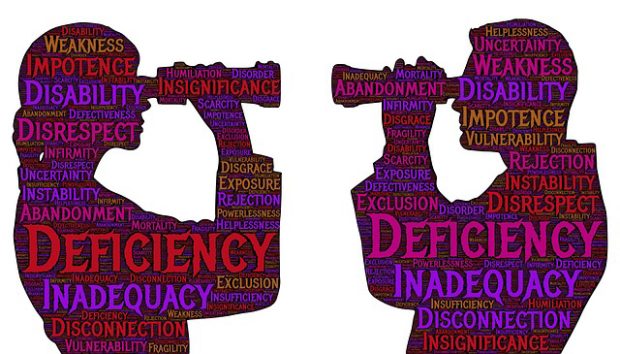How to Turn Workplace Conflict Into a Learning Experience

Conflicts and disagreements are inevitable in the workplace. While some workplace conflicts may be relatively minor and even mildly amusing to a certain extent, more serious issues can be anything but. This is not just true in the workplace, but in life in general. The difference is that you can’t deal with workplace conflicts in the same way as you deal with outside world conflicts. If you’re at the dentist office and the receptionist is being rude, you can simply walk out and go to another dentist. If you’re in the middle of your mid-year review and you don’t agree with your boss’s opinion, you can’t just get up and leave.
Whenever a conflict arises in the workplace, a certain degree of compromise must be achieved in order to promote and maintain a healthy work environment. Unfortunately, getting both sides to realize this can sometimes be difficult. To disagree is simply part of being human, and while we might someday evolve to the point that we can navigate conflicts with ease, we are not there yet.
In the meantime, the best we can do is try and be mindful of both ourselves and the person sitting across from us whenever we feel the tension start to rise. The following are the five main pillars of any workplace conflict resolution, that you can use to bridge the gap between two contrasting points of view
Consider other perspectives
Do your best to consider everyone’s interests, not just their position. It is human nature to cling to our position when a disagreement arises. Of course, this is only natural—we’re convinced that we’re right and we intend to do everything in our power to prove that point.
Here’s the thing that so many people forget, though: it isn’t always about what’s right and wrong. More often than not, the two opposing parties simply have different interests at heart. Instead, try focusing not on what you want but on why you want it. You may quickly discover that there is, in fact, an obstacle in your own train of logic that is preventing a possible resolution.

Have you ever negotiated a raise before? Or, even better, have you ever had to negotiate a raise for someone else. As any manager or supervisor can probably tell you, there are a number of people who have to sign off on a raise before it is granted. All too often, the manager or supervisor genuinely thinks that the person beneath them deserves a raise.
The problem is that their boss has different interests and priorities and may not see it that way. What’s valuable to one person in a company may not be valuable to another. So if you get denied a raise, it’s easy to feel frustrated with your direct superior, when the final decision is ultimately out of their hands. All this does in the end is create an uncomfortable work situation. Put your energy towards actions that can demonstrate your worth to those who have yet to realize it.
Aim for middle ground.
When in doubt, aim for the middle ground. Some adages really are true, and this is the perfect example of one of them. Collaboration is an incredibly powerful tool. It also employs the law of reciprocity: if you show you are willing to collaborate, it is likely that the other party will come around as well.
Collaboration works especially well if the other party has been struggling with push back along the way. If you’ve taken a hard stance on a certain issue for months and refused to bend, redirecting your efforts to be more collaborative allows all persons involved to fulfill their goals without feeling as if they’re sacrificing their priorities. The other party will often be reciprocal to your gesture just because you are willing to understand their perspectives as well.

Never make assumptions; target them instead.
It is only natural that we as humans draw assumptions without having all the essential information. The best thing you can do when a conflict situation arises is to direct your questions toward topics that could potentially lead to assumptions.
This will naturally guide you to better understand the other party’s interests while also making them more receptive to your own. You may be surprised to find out that a great deal of the initial conflict arose because one or both parties jumped to inaccurate assumptions. We’re only human; while we’ve mastered language, we have yet to perfect the art of using language deliberately and effectively.
Listen to their words, but read their body language.
While the words coming out of a person’s mouth can often be willfully deceptive, their body language is a different story. Even if a person is outwardly lying with their language, it is often difficult for a person to feign their inner feelings under body language.
The key is knowing what to look for, and certain people are able to mask their body language to varying degrees of success. Posture alone can indicate aggression, agreeableness, indecision, or defensiveness. At the same time, eye contact, fidgeting, checking the time, or sweating can be powerful nonverbal clues you can use to grasp the conversation at hand better.
Actively listen.
At one point or another, we have all been accused of not listening to the person sitting across from us. While that person will probably get defensive if we try to lie to avoid offending them, the truth is—in most instances—we were not listening. This is human nature, no one particularly is at fault here.
People have a lot of thoughts going through their heads, and sometimes it’s difficult to get whatever is happening in the external world to register. Listening, and listening well, takes practice. It is a skill that needs time to develop, perhaps more in a work environment than in any other place. By attentively listening in work conversations, you can easily decipher underlying interests more quickly.
These are five straightforward techniques that you and your team can use to help navigate all different levels of workplace conflict. The important thing to remember is that every situation is unique and proves its own unique challenges. The cornerstone of all the above points is to do everything in your power to remain calm and collected.
Think of them not as a rulebook but more of a guideline for how best handle conflict. It is essential to be able to think on your feet in tense situations like these and be mindful to adapt to situations as they change. If you keep all this in mind, there shouldn’t be any conflict you’re unable to handle.
This guest post was authored by Andres Lares
Andres Lares, Managing partner at Shapiro Negotiations Institute and co-author of “Persuade: The 4-Step Process to Influence People and Decisions” Andres is the Managing Partner at SNI, where he is responsible for the day-to-day operations of the global training and consulting firm. He previously served the role of Chief Innovation Officer until 2017. His multi-disciplinary and lingual skills broaden SNI’s ability to effectively teach and consult in a wide range of industries, languages, and cultures.
*****
Ms. Career Girl strives to provide valuable insights you can use. To see more from our columnists and guest authors, check these out! Or subscribe to our weekly email featuring our latest articles. We’re also present on Medium!



